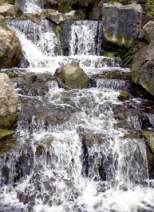
|
| Articles by Category | ||
| Current Features | ||
| Gardening Projects | ||
| Garden Design | ||
| Plants and Maintenance | ||
| Classified | ||
| Shopping | ||
| Garden Designers | ||
| Gardening Sites | ||
| Gardens to Visit | ||
| Gardener's Homepages | ||
| Gardening Courses | ||
| Write for Gardenzine | ||
| Submit a Site | ||
| Syndication | ||
| Contact Gardenzine | ||
| Back Copy | ||
| ||

|
||

|
||
| Related Content | ||
| ON GARDENZINE: | ||
| Build a Garden Pond | ||
| Edging your pond | ||
| Japanese garden style | ||
| Practical Water Gardens |
Designing with Waterby Julie Kilpatrick |
|

Growing aquatic plants
Keeping fishIf you want to keep fish in your pond, you need to know that this will require a certain degree of effort on your part. Since they can't escape the pond, you have to control the water conditions for them. Plants for them to hide amongst are a must as is a good filtration system and you should provide protection from cats, herons and other predators. Encouraging wildlife
Creating reflection
Using a pond as a mirror for objects or plants in or close to the pond was a popular tactic employed by garden designers of stately homes. You can repeat this on a smaller scale by placing a specimen plant, structure or garden ornament close to the pond where the sun will reflect it onto the water.
Taking advantage of slopes
If you have a natural slope in your garden, you can recreate the effect of a waterfall with a cascade and this will give you the relaxing sound of running water as well. You can use cascades too to great effect as part of walled terracing. Creating a slope for a cascade on ground that is level can be very difficlut to get right. Again, you need to be wary that it doesn't look too contrived.
Adding movement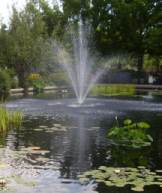
Sensory pleasure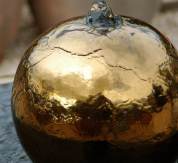
If you haven't the space for a pond or you don't fancy the maintenance involved in keeping a pond, you can experience the sound of running water with a stand-alone water feature. These are generally sold complete with reservoir and are relatively easy to install. The reservoirs for these features are usually quite shallow so you will probably need to turn off your water feature in winter to prevent freezing water damaging the pump.
Light it up
Finally, don't forget about your pond or water feature at night. You can use floating or submerged lights in a pond or you can copy the most famous fountains in the world by lighting up sprays and jets.
Home
Contact
Submit a Site
Syndication
Write for Us
Back Copy
RSS Feed
|


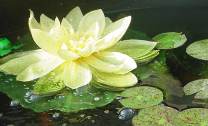 No pond is complete without the plants to compliment it and having a pond in your garden means that you can increase the range of plants you are able to grow. There are four different types of aquatic plants grouped according to their position in the pond. Marginal aquatics grow in shallow water around the edges of the pond with their roots in water and their heads above the water level. Deep-water aquatics have their roots in 45cm or more of water and prefer to have their leaves floating on the surface. Submerged aquatics live completely under water and they are the oxygenating plants that can be seen sending up bubbles to the top of the water. Finally, free-floating aquatics drift around the surface of the water and don't require soil in which to grow.
No pond is complete without the plants to compliment it and having a pond in your garden means that you can increase the range of plants you are able to grow. There are four different types of aquatic plants grouped according to their position in the pond. Marginal aquatics grow in shallow water around the edges of the pond with their roots in water and their heads above the water level. Deep-water aquatics have their roots in 45cm or more of water and prefer to have their leaves floating on the surface. Submerged aquatics live completely under water and they are the oxygenating plants that can be seen sending up bubbles to the top of the water. Finally, free-floating aquatics drift around the surface of the water and don't require soil in which to grow.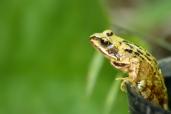 Ponds are a magnet for wildlife. Not only is it great fun to watch these welcome visitors to your garden but they are also a useful way to keep down other pests such as slugs and aphids. Ponds for wildlife will again be planted reasonably well and should have taller plants around the edges of the pond to provide hiding places and shelters.
Ponds are a magnet for wildlife. Not only is it great fun to watch these welcome visitors to your garden but they are also a useful way to keep down other pests such as slugs and aphids. Ponds for wildlife will again be planted reasonably well and should have taller plants around the edges of the pond to provide hiding places and shelters.

